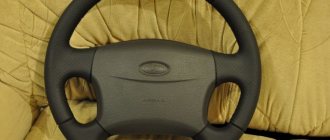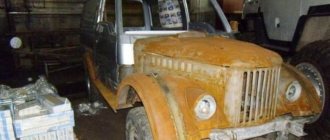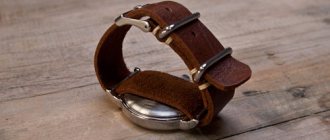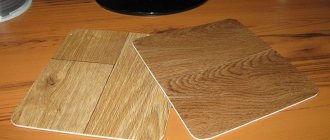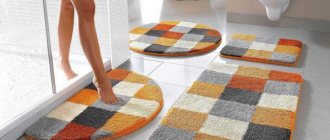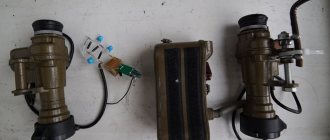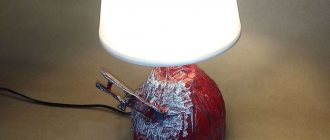Surely, if you were doing repairs and drilling holes
, then you know
how much dust such a process produces
.
Interested in eliminating this problem, you most likely came across the homemade product
presented below, but I decided that
it would be useful to remind you
.
You can make two devices at once
by cutting them out of the same plastic bottle,
one will collect dust from the walls and the other from the ceiling.
Dust collector for wall
When collecting dust from the wall, you can connect a vacuum cleaner
, this is the most effective method.
Or you can just screw the lid on
, it’s less productive, but it solves the problem and
is more convenient to hold
.
To keep the neck of the collection tightly in the vacuum cleaner tube, I wrapped masking tape around it, the edges of which had to be cut off; I think electrical tape would have done a better job of this.
Ceiling dust collector
Rubber dust collectors are included with the hammer drill, but they solve the problem of preventing dust from getting into the chuck holding the drill shank
.
And if you install a homemade catcher
from a bottle, which is much wider, then
in addition to preventing dust from entering the cartridge,
it
will also retain a significant part of it
.
Please note that I wrapped the edges of the catchers with electrical tape.
To
smooth out sharp edges
, you can do this too or use another material, such as masking tape.
Subscribe and share with your friends on social networks, and I will remind you of something more than once. Your Home Repair.
Source: zen.yandex.ru
Rotary hammers with a vacuum cleaner: types, selection and manufacture
Modern construction tools have a lot of additional functions. They allow them to stand out from their peers and attract buyers. In addition to the fact that modern rotary hammers combine the functions of both a jackhammer and a drill, they also allow you to quickly change chuck attachments, select an operating mode, and control the quantitative indicators of rotations and impacts.
In addition to those listed, among the additional functions you can often find a built-in vacuum cleaner. This characteristic deserves closer attention.
What is it for?
Many people don’t even think about why the vacuum cleaner function is needed in a rotary hammer.
It's no secret that dust appears during the operation of a rotary hammer. Its quantity and composition depend on the material with which the work is carried out. Some may consider the presence of dust not such a big inconvenience, but it should not be underestimated.
- Dust also contains very small particles that settle on human skin and clothing. If they are constantly inhaled, respiratory diseases and allergic reactions may occur. In addition to a vacuum cleaner, you must use a respirator and protective clothing.
- This affects human comfort. Working in dust is not very pleasant, and it is simply impossible to hold a regular vacuum cleaner and work with a hammer drill at the same time. For people whose daily work is connected with this tool, the presence of a dust collector in it will greatly facilitate the work.
- Small particles of dust negatively affect the operation of the construction tools themselves. For example, the boot on the cartridge may fail.
- After any work performed with a conventional hammer drill, thorough cleaning is required.
Even if you only need to drill a couple of holes, you will then have to wipe off dust not only from the floor, but also from other surfaces. To reduce this step to a minimum, choose a model with a dust collector.
To make working with tools comfortable, do not neglect the function of the built-in vacuum cleaner. It will not be superfluous even with minor modifications, but professionals simply need it.
All rotary hammers with different types of dust collection systems can be divided into professional and amateur (for home use). Due to their high power and weight, professional ones are designed for certain types of work. Tools for regular use often combine several modes; they are less powerful and light in weight. Naturally, the cost of the former is several times higher.
Self-contained dust removal system
An independent means, albeit primitive, includes a vacuum cleaner hose. It is quite easy to use and does not require any financial costs. The hose can be placed next to the hole. But there are disadvantages to this method. Drilling with heavy hammer drills will require assistance, and some dust will still penetrate into the room.
Important! Recently, so-called vacuum dust collectors have appeared. They are made of durable casing and last for a long time.
Popular models
To make the advantages and disadvantages of rotary hammers with vacuum cleaners more clear, let’s look at several popular models.
- Bosch GBH 2-23 REA has proven itself to be extremely good. The design of the vacuum cleaner is easily removable. Inside you can see a filter and a container for collecting small construction debris, which is quite easy to clean. Without a filter, the tool works like a regular hammer drill with two modes. It copes well with its stated functions, holds more than 90% of dust and is convenient for transportation.
The only complaints were that when connected, such a unit is quite heavy and holding it is not as convenient as without additional parts. Yes, and its price is somewhat overpriced.
- MAKITA HR2432 impresses with its reliability and good performance. The dust collector can be detached - then you will get just a good hammer drill. The bag is very spacious, even with intensive work it can be emptied every two days. Unlike other analogues, debris does not spill out when the unit is turned over. The convenience of working with the ceiling is especially noted - dust does not fly into the eyes and cleaning is practically not necessary.
The complaint is that it only picks up small particles. Large pieces will have to be removed by hand.
The storage container is so large that it allows you to store the hammer drill when assembled.
These two models with a dust extractor are not the only ones, there are not many of them on the market, but there is a choice.
However, the choice of tool depends on the planned work . To hang several pictures, you can take the first model. For larger-scale actions, the second one is better.
How to drill without dust
24.09.201625.09.2016
To an inexperienced master, such an assumption may seem like a joke; in fact, drilling without obligatory debris is quite possible.
Many are afraid of the upcoming process because of the expected consequences, because then they have to spend a long time cleaning and washing the floors throughout the apartment, since the dust spreads quite quickly. We will talk about effective drilling methods that are suitable for apartments or houses.
What is remarkable about these methods is that no annoying debris is generated during the work, which means there will be less cleaning work.
Drilling without dust
Experienced builders are not afraid of work when they need to drill a hole in the wall without dust and carefully. We will share our secrets with you. There are several such methods, but the most common are four methods:
- using a vacuum cleaner;
- using an envelope on the wall;
- using a drill collar;
- using a hammer drill with a vacuum dust collector.
Vacuum cleaner
The easiest way to drill a hole without dust is to use a vacuum cleaner. No matter how strange the method may seem, in practice it works perfectly. The success of the process depends on the vacuum cleaner, the hose of which is brought directly to the drill. During operation, the vacuum cleaner that is turned on will pick up small construction waste. The only negative is the contamination of the unit itself.
Envelope on the wall
If you need to prepare a hole on a vertical wall, you can use a special paper device, which is secured with masking tape to the wall, just below the intended hole. Construction waste will fall into it and will not be sprayed throughout the apartment.
Envelope on a drill
This option can only be used if you need to prepare a hole in the ceiling.
- You need to make a small collar or funnel from a sheet of paper;
- Its size must be calculated in such a way that when drilling, the edges of the envelope touch the surface of the ceiling, but do not limit the movement of the drill;
- Using ordinary tape, it is necessary to secure the paper blank to the drill chuck, but taking into account the fact that the paper should not interfere with the operation of the drill. The end result should be a cone-shaped collar mounted on a drill;
- It remains to test the effectiveness of this method in practice. When drilling, all debris will fall into the funnel, which will prevent it from spreading throughout the room.
Rotary hammer with vacuum dust collector
The method is considered the most modern and effective when drilling any surfaces. There is no need to worry about the spread of construction waste, since a vacuum dust collector does this better than other methods.
How to do it yourself?
The choice of a dust collector largely depends on its cost. It is not always possible to make an expensive purchase. And when purchasing, it is difficult to take into account all the nuances.
If you have a hammer drill without a vacuum cleaner, you can purchase a dust collector separately. Or do it yourself without spending effort or money.
The simplest option for a horizontal position of the hammer drill is to make a pocket in the place of the future hole. Plain paper and masking tape work well for this.
Factory type dust extractor
A factory-type dust removal system can be included or sold separately - it all depends on the wishes of the buyer. The undoubted advantages include replaceable filters, the ability not to violate the integrity of the instrument, and ease of use. There is one significant drawback - the device is powered by the main motor of the hammer drill.
How to make a dust extraction for a rotary hammer
Dear visitors to the site “ Self-made friend ”, today you will learn how to independently make a device for a rotary hammer to remove dust while cutting grooves and walls... This device is ingeniously simple, and most importantly, very budget-friendly and will cost mere pennies, because it uses one sewer tee with a 45 degree outlet to which a hose from a vacuum cleaner with a cyclone filter is connected. Additionally, the PVC tee is attached to the handle of the hammer drill using a drill limiter and a clamp. An adapter collar was also used to connect the hose.
The author of this Ingenious product: Vladimir Rakhmail.
As they say, “Everything ingenious is simple.” So, let’s take a concrete look at what is needed to create an attachment for a rotary hammer to remove dust?
Materials
- sewer tee 50 mm with 45 degree bend
- corrugated hose
- clamp
- drill limiter
- vacuum cleaner and cyclone filter
Tools
Step-by-step instructions for creating a device for a rotary hammer to remove dust with your own hands.
Everything is very simple, we take a 50 mm PVC tee with a 45 degree bend and put it on the front part of the hammer drill, additionally fastening it with a drill limiter and a clamp. Next, we attach a corrugated hose to the outlet through the adapter collar and connect it to a vacuum cleaner with a cyclone filter. That's all, the dust removal device for the rotary hammer is completely ready. As you can see, there is nothing complicated, everything is simple, affordable and cool. Let us remind you once again that the author of this brilliant product is Vladimir Rakhmail.
Thank you for your attention! Good luck with your construction and renovation!
Source: www.samodelkindrug.ru
How to drill holes without dust and debris
Tired of cleaning up dust and dirt after every drilled hole in your apartment? Thanks to our “life hacks” you will be able to drill holes without dust and debris!
In this article, we will offer several options that will help you drill a hole without dust.
We use a vacuum cleaner
It might seem like a simple device, but it really works. The idea is simple: while drilling with a drill, you need to keep the vacuum cleaner hose turned on directly next to the hole (it is better to remove the nozzle).
As a result, all soap and debris from the hole will be sucked into the vacuum cleaner without polluting your apartment.
If you are doing a renovation and you need to drill a lot of holes, you can buy a special dust collector attachment for a drill, or make it yourself using improvised materials.
Envelope on the wall
If the hole is being drilled in a vertical wall, a great option would be to tape a paper envelope directly under the hole. In this case, all the dust from the hole will fall not onto the floor, but into this envelope. The envelope is made and attached to the wall using regular tape.
This is the simplest option. Such an envelope will not collect all the dust, but 80-90% will be retained on the envelope.
Envelope on a drill
This option is more suitable if the hole is drilled in the ceiling. It is enough to wrap the base of the drill with paper, thus creating something like a “bag” and secure it with tape.
Source: https://vashavannaya.ru/kak-sverlit-otverstiya-bez-pyli-i-musora.htm
Vacuum cleaner attachment.
Subscribe to the author
Follow the author if you like his publications. Then you will receive notifications about his new posts.
You can always unsubscribe from notifications in the author's profile.
Dust collector for a rotary hammer or drill.
Offline it costs a lot of money - I found it for 1,700 rubles.
Speed 100 mm/sec.
Subscribe to the author
Follow the author if you like his publications. Then you will receive notifications about his new posts.
You can always unsubscribe from notifications in the author's profile.
Homemade dust collection devices
Now let's talk about dust collection at home, which can be done when drilling with a household hammer drill or drill.
It is immediately worth noting that homemade devices cannot boast the same level of efficiency as is the case with professional dust collectors. But they are cheap, often free, and easy to use without an extra pair of hands.
To organize the collection of dust when drilling with your hammer drill, you can make a dust collector based on the following raw materials:
- plastic bottle or cup;
- sponge;
- paper;
- household vacuum cleaner.
Plastic cup or bottle
An excellent homemade product for removing dust. Suitable in cases where holes need to be made on the ceiling. Indeed, in this case, the bulk of construction dust will fall down.
To make a dust collector, simply connect a drill or auger with a plastic cup or bottle. You just need to cut off the bottom of them.
When cutting a cup, make sure that the part of the drill that goes into the wall protrudes above the walls of the cut cup.
As a result, concrete or brick flour will fall into the cup, and you can then easily remove all remaining dust from it. The same is true when using a cut-off plastic bottle.
Dish sponge
Here you will need to arm yourself with a marker and a stationery knife.
The dust collector attachment is made according to the following algorithm:
- take a regular dishwashing sponge;
- in the center draw a circle about 5 cm in diameter;
- cut off the entire soft part of the sponge in a circle, but leave the hard part;
- in the backing of the sponge, made of a denser material, make a hole the size of the drill (slightly smaller to fit the nozzle tightly);
- Before starting work, wet the sponge in water.
But even here it is worth objectively recognizing that the option with a moistened sponge is more suitable for drilling a ceiling than a wall.
Paper
There are 2 options here: take a ready-made paper envelope, or use a sheet of paper and assemble the corresponding structure with your own hands.
The essence of the method for making a dust collector is to glue a thick paper envelope to the wall where the hole will be drilled using tape. As a result, debris will fall down and fall inside the envelope.
In addition to a paper envelope, paper and plastic cups glued to the wall are often used for the same purposes.
The only disadvantage of the product is that it can only collect fairly large and heavy dust. Light particles will swell to the sides.
Comments
a wonderful thing, why I didn’t get to it before, I was tormented, in one hand I have a hammer drill in the other, a dust pipe.
On thingiverse I found only 2 options for dust collectors - the one presented and this second option for small holes.
Thank you. Sometimes it is necessary. I printed it in 30 minutes spirally in 1mm prototype. The result is a weightless and soft design.)
What does this thing do? Where should it be mounted and what does it detect? So I attached the nozzle to the pipe of the vacuum cleaner, then do I need to dust above the “eye” with a drill?
No, lean this thing against the wall and drill through the hole.
Or apply it to your eyes xD
Yes, printing with supports. I forgot to write - it requires an adapter for the vacuum cleaner pipe. The model has an internal diameter of 31.5, an external diameter of 41.5. I drew an adapter for the diameter 34.5 pipe, I will print it today, check it and post the model with the source file.
I have a budget one: an obliquely cut neck of a plastic bottle and a piece of hose.
